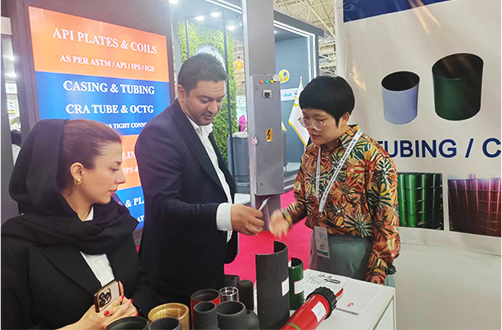- Afrikaans
- Albanian
- Amharic
- Arabic
- Armenian
- Azerbaijani
- Basque
- Belarusian
- Bengali
- Bosnian
- Bulgarian
- Catalan
- Cebuano
- Corsican
- Croatian
- Czech
- Danish
- Dutch
- English
- Esperanto
- Estonian
- Finnish
- French
- Frisian
- Galician
- Georgian
- German
- Greek
- Gujarati
- Haitian Creole
- hausa
- hawaiian
- Hebrew
- Hindi
- Miao
- Hungarian
- Icelandic
- igbo
- Indonesian
- irish
- Italian
- Japanese
- Javanese
- Kannada
- kazakh
- Khmer
- Rwandese
- Korean
- Kurdish
- Kyrgyz
- Lao
- Latin
- Latvian
- Lithuanian
- Luxembourgish
- Macedonian
- Malgashi
- Malay
- Malayalam
- Maltese
- Maori
- Marathi
- Mongolian
- Myanmar
- Nepali
- Norwegian
- Norwegian
- Occitan
- Pashto
- Persian
- Polish
- Portuguese
- Punjabi
- Romanian
- Russian
- Samoan
- Scottish Gaelic
- Serbian
- Sesotho
- Shona
- Sindhi
- Sinhala
- Slovak
- Slovenian
- Somali
- Spanish
- Sundanese
- Swahili
- Swedish
- Tagalog
- Tajik
- Tamil
- Tatar
- Telugu
- Thai
- Turkish
- Turkmen
- Ukrainian
- Urdu
- Uighur
- Uzbek
- Vietnamese
- Welsh
- Bantu
- Yiddish
- Yoruba
- Zulu
crossover drilling tool
The Evolution and Significance of Crossover Drilling Tools in the Oil and Gas Industry
In the ever-evolving landscape of the oil and gas industry, the need for efficient and versatile drilling solutions is paramount. One such innovation that has significantly impacted drilling operations is the crossover drilling tool. These tools have become essential for optimizing the process of drilling by enhancing flexibility and reducing downtime in well operations.
What is a Crossover Drilling Tool?
A crossover drilling tool is a specialized piece of equipment designed to facilitate the transition between different types of drilling systems. Typically used in various applications, such as transitioning from a land rig to an offshore rig or between different well types, crossover tools allow for the seamless connection of drill strings and components of varying sizes and specifications. By providing a method to adapt drilling operations to different conditions and requirements, they play a crucial role in enhancing operational efficiency.
Design and Functionality
Crossover drilling tools are engineered to handle high levels of stress and are constructed using durable materials that can withstand harsh drilling environments. Typically featuring a variety of connection interfaces, these tools allow operators to easily switch between different drill bits, collars, or other components without the need for extensive modification or additional equipment.
One of the primary benefits of crossover drilling tools is their ability to minimize operational downtime. When transitioning between different types of drilling equipment, these tools enable quick and efficient changeovers, significantly reducing the time spent on the rig. This not only enhances productivity but also contributes to cost savings over the life of a drilling project.
The Importance of Versatility
Versatility is perhaps the most significant advantage that crossover drilling tools offer. The oil and gas industry operates under ever-changing conditions, which may require different drilling strategies, techniques, and equipment. Crossover tools provide the flexibility needed to adapt to these conditions without compromising the integrity of the drilling process.
crossover drilling tool

For instance, in a scenario where operators need to drill through varying geological formations, crossover drilling tools allow them to switch between bits designed for soft and hard rock quickly. This adaptability not only optimizes drilling performance but also helps in maintaining the pace of operations, which is critical in an industry where time is literally money.
Reducing Risks
In addition to enhancing efficiency, crossover drilling tools play a critical role in reducing risks associated with drilling operations. By enabling smoother transitions between different drilling systems, these tools minimize the potential for mechanical failures and the accompanying hazards. Flawless integration of drilling components ensures that operators can maintain better control over the wellbore, preventing issues such as wellbore instability or unexpected pressure changes.
Moreover, the ability to quickly switch out equipment allows drilling teams to respond promptly to unforeseen issues, thereby mitigating risks associated with delays and equipment failures. In an industry where safety is paramount, the use of relevant, high-quality technologies such as crossover tools is crucial.
Future Trends in Crossover Drilling Tools
As the oil and gas sector continues to embrace advanced technologies, the design and functionality of crossover drilling tools are expected to evolve. Innovations such as automation and smart technology are likely to be integrated into these tools, enabling more precise control and monitoring throughout the drilling process. Additionally, the push for environmentally friendly practices may lead to the development of crossover tools designed to minimize environmental impact while maximizing efficiency.
Conclusion
In conclusion, crossover drilling tools represent a vital advancement in the oil and gas drilling industry. Their ability to enhance operational efficiency, provide versatility, and reduce risks underscores their importance in modern drilling operations. As technological innovations continue to shape the industry, crossover drilling tools are set to be an integral component of future drilling strategies, helping operators navigate the complexities of extraction while optimizing resources and ensuring safety. The continued evolution of these tools will undoubtedly play a significant role in shaping the future of drilling practices worldwide.
-
Well Casing Extension Couplings – Applications and InstallationNewsJun.06,2025
-
Types of Crossover Subs in Drilling & CompletionNewsJun.06,2025
-
Key Features of High-Quality Tubing Pup JointsNewsJun.06,2025
-
Installation and Maintenance Tips for Steel Couplings for PipeNewsJun.06,2025
-
How to Select the Right Pup Joint for Oil & Gas OperationsNewsJun.06,2025
-
Applications of Stainless Steel Pipe CouplingsNewsJun.06,2025







